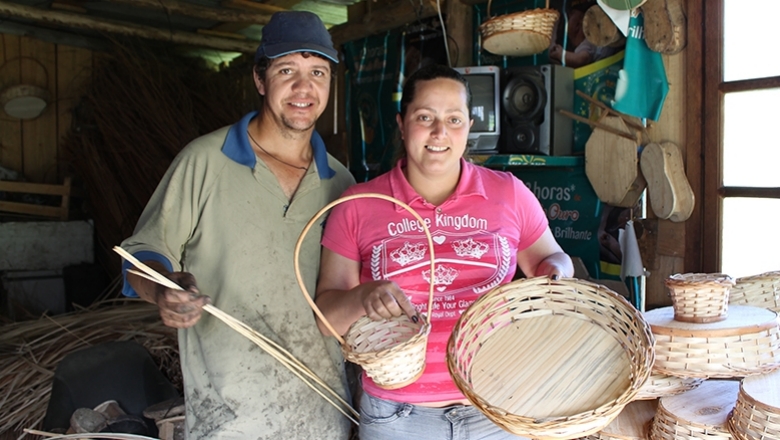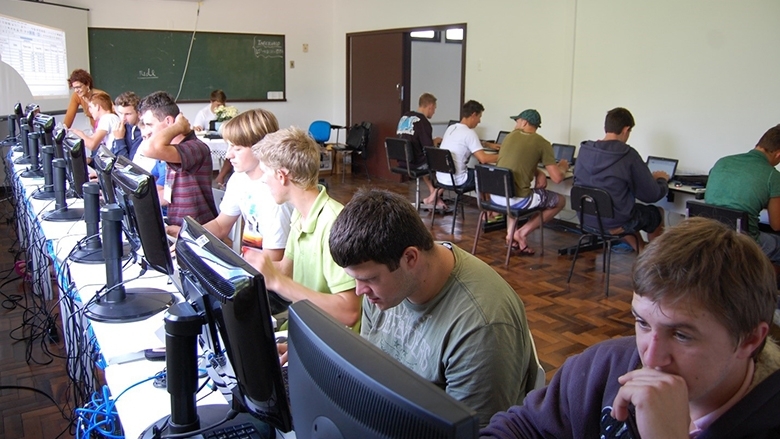Challenge
In Santa Catarina, issues of environmental degradation, rural poverty and status, and agriculture sector trends are interdependent. Despite its strong macroeconomic performance, Santa Catarina’s economic opportunities are not equally available to all. About 5 percent of the population (275,000 people) live in poverty (defined as US$ 1.00 per day per family), 20 percent of them in the state’s rural areas. Most reside on agricultural family farms, do rural work, or are indigenous people. In addition, other social challenges in rural areas include (i) lack of productive and commercial skills development and training for farmers and their families; (ii) few employment opportunities, resulting in an exodus of youth to cities; (iii) low education levels among middle-aged and aged adults; and (iv) food security problems in the poorest rural households. Growth in the agricultural sector has also contributed to increasing conflicts over water quantity and quality. Agriculture, along with domestic sewage, is the main source of water pollution in rural areas. Pressure is growing in the state to implement integrated water resource management and to strengthen local institutions’ and rural communities’ capacity to implement key water management instruments.
Approach
The Santa Catarina Rural Competitiveness Project established a platform and enabled the environment for the state to increase small farmers’ productivity through targeted technical assistance for innovation and improved production efficiency, product quality, and resource-based management. The technical strategy focus supported beneficiaries at two levels: directly, to implement collective and associated individual investments included in business plans; and indirectly, through an improved framework for delivering complementary public services to shore up the effectiveness and long-term sustainability of private investments.
Results
The project substantially achieved its development objectives “to increase the competitiveness of family agriculture producer organizations while providing support for an improved framework of structural competitiveness-inducing public services activities” through direct investments supported by technical assistance and capacity building for small farmers’ productive organizations and their affiliates, contributing to the long-term goal of improving productivity, competitiveness, and market access.
Specific project interventions included the following:
- Financing demand-driven business initiatives for 723 small farmers.
- Establishing and strengthening 259 institutional business arrangements to add value to agriculture products produced by individual family farmers, directly benefiting 10,900 rural families.
- Executing 59,834 individual production-system improvement plans.
- Providing technical assistance and rural extension services to 134,460 family farmers, 42,735 rural young people, and 1,950 indigenous families.
- Certifying that 2,500 small farmers meet vegetal sanitary requirements for market access.
- Certifying that 728 small farms are free of brucellosis and tuberculosis.
- Rehabilitating 474.8 kilometers of rural roads to improve market connectivity.
The impact evaluation carried out by the project indicated the following:
- Average total annual sales for participating small-farmer productive organizations increased by 64 percent, as compared to sales of nonparticipating farmers, a 113.3 percent increase from the original 30 percent target.
- Responses from a beneficiary perception survey of 518 young people (31 percent of young beneficiaries) indicated that 64.5 percent had seen an increase in household income, with amounts ranging from 15 to 50 percent.
- Environmental management achievements supported by a previous World Bank loan were maintained, with 65 percent of the state’s water resources now under decentralized, community-level, participatory planning and management and 10 percent of state territory was now managed under an “ecological corridor” concept emphasizing coexistence of sustainable production and natural resources preservation.
Additional project outputs and achievements included the following:
Water Management
- The State Register of Water Resources Users database registered 74,000 users, allowing estimates of water demand for the Santa Catarina hydrographic basins.
- A water resource information system was implemented and improved.
- Aero-photogrammetric and hydrogeological mapping were undertaken.
- A Hydrometeorological Monitoring and Warning System was implemented.
- Sixteen basin committees with decentralized structures were established and 14 river basin plans were elaborated.
- Ecological Corridor Management: This program created a Forest Area Register and Ecological Corridor Management Groups. The database includes incremental forest inventory areas covering 273,040.31 hectares and can be used to evaluate and monitor forest areas, set payments for environmental services and conservation credits, and help plan environmental recovery programs.
- The Conservation Credit System: This institutional legal framework created a secure environment in which forest-area investors and owners can operate and provided an unprecedented environmental management tool using private resources derived from legal obligations arising from suppression of vegetation for the conservation of biodiversity in the Ecological Corridors; owners and entrepreneurs acquire Conservation Credits to pay off their environmental commitments, with project-sponsored information and tools used to guarantee reliability in negotiations and contracts.

